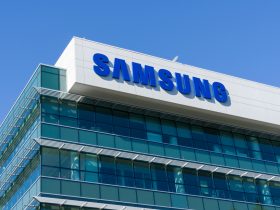Nuclear fusion, a process that creates huge amounts of energy through the fusion of two light nuclei instead, while traditional fission splits one heavy, unstable nucleus into two, is considered by many to hold the key our future energy needs.
Unlike nuclear fission, fusion is an inherently safe reaction because the process quickly dies if conditions change. For example, if the plasma is too cold or too hot, or if there is too much fuel or not enough, or too many contaminants, or if the magnetic fields are not set up just right to control the turbulence of the hot plasma. It also doesn’t result in hugely toxic, nuclear waste that is difficult and expensive to dispose of like fision.
Unfortunately, the qualities that make nuclear fusion safe are also those that make it so difficult to achieve. But scientists are making notable progress and many are confident that, possibly within a decade or two, it could be a viable way to produce clean energy. And vast quantities of it.
A few weeks ago, a British reactor smashed the world record for the amount of energy made in a sustained nuclear fusion reaction, in what scientists said was a “landmark” in the quest for clean and reliable power. And last spring scientists in Switzerland succeeded in heating a bubble of plasma to ten million degrees centigrade.
The machine that achieved that feat in Switzerland used electromagnets to squeeze and mold the substance into a ring. And the magnets used in that process were controlled by AI developed by the UK-based Alphabet subsidiary DeepMind.
DeepMind’s AI scientists, among the world’s top experts in machine intelligence, had created an algorithm designed to control some of the many delicate factors that need to be just right for nuclear fusion to happen. And controlling matter heated to temperatures hotter than most of the sun is certainly a delicate factor.
DeepMind’s Pushmeet Kohli explains:
“This substance isn’t solid, it doesn’t keep its shape and it’s like the weather, very difficult to predict. You have to control this unstable thing that just wants to blow up.”
Nuclear fusion is not only as hot as the sun, it uses the same process that powers it and every other living star. The process involves the squeezing together of hydrogen atoms to make helium which creates vast amounts of energy. But with little harmful radiations.
The results of the experiment in Switzerland were this week published in the science journal Nature. DeepMind’s AI learned how to control the molten plasma by first training on simulator. Once it had learned how best to respond to the plasma’s fluctuations and keep it under control through simulated trial and error it was tested on a real configuration variable reactor called a Tokamak.
And while the initial success last year was an early experiment it showed plenty of promise. Kohli is convinded the experiment “demonstrates for the first time how quickly machine learning is able to tackle this very, very hard control problem”.









